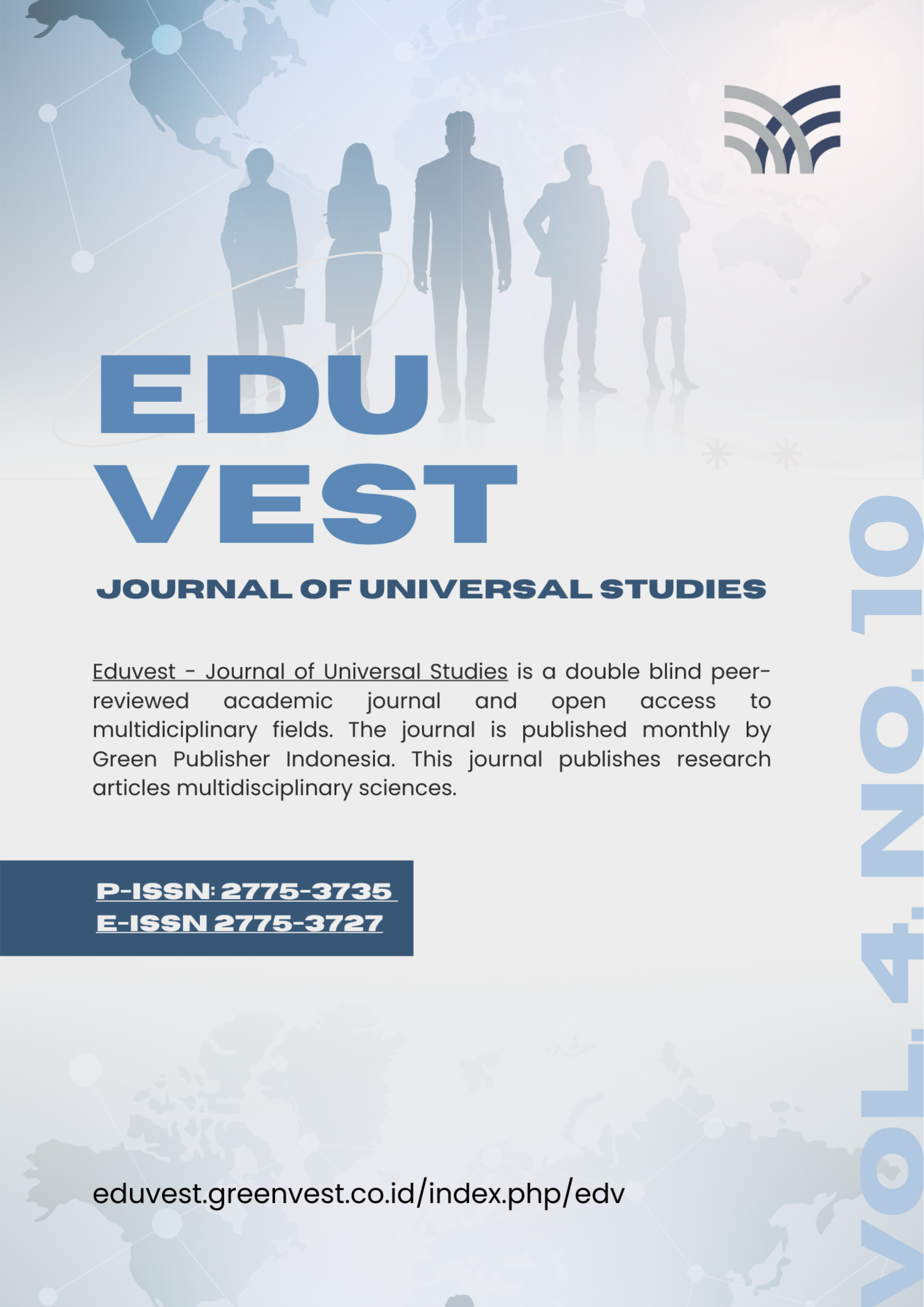Investment Feasibility Analysis Of Resort X Development Project In Labuan Bajo Using Discounted Cash Flow And Monte Carlo Method
DOI:
https://doi.org/10.59188/eduvest.v4i10.1491Keywords:
Discounted Cash Flow, Monte Carlo, Feasibility Analysis, Trinomial Lattice, Labuan BajoAbstract
In general, tourist destinations in Labuan Bajo are synonymous with Komodo National Park which is one of the seven wonders of the world. This is the background for the developer to invest in the construction of resort X in Labuan Bajo. It is hoped that the X resort area can become an attraction for tourists in Labuan Bajo. In this study, a financial feasibility analysis was carried out to find out whether or not the investment to be made was feasible. The methods used are discounted cash flow (DCF) and Monte Carlo. The X resort construction project is built on an area of 113,396 m2 and is planned to build 263 units of shop houses and 1 unit of 4-star hotels as well as supporting buildings such as back of house (BOH) buildings, public toilets, floating libraries, arrival pavilions. The results of the analysis using the DCF method show a positive NPV value of Rp 87,895,000,000 and an IRR value of 17.66% greater than the Minimum Attractive Rate of Return (MARR) value of 10%, so that the project can be declared feasible to be implemented, as well as the Monte Carlo method which shows a positive NPV value of Rp 35,423,000,000 and an IRR value of 12.82% greater than the MARR value. Therefore, based on the results of the analysis of these two methods, the X resort project in Labuan Bajo can be declared feasible to be implemented.
References
Bouayed, Z. (2016). Using Monte Carlo simulation to mitigate the risk of project cost overruns. International Journal of Safety and Security Engineering, 6(2), 293–300
Badan Pusat Statistik Kabupaten Manggarai Barat. (2020). KABUPATEN MANGGARAI BARAT DALAM ANGKA. Badan Pusat Statistik (bps.go.id).
Badan Pusat Statistik Kabupaten Manggarai Barat. (2021). KABUPATEN MANGGARAI BARAT DALAM ANGKA. 2024 Badan Pusat Statistik (bps.go.id).
Badan Pusat Statistik Kabupaten Manggarai Barat. (2022). KABUPATEN MANGGARAI BARAT DALAM ANGKA. 2024 Badan Pusat Statistik (bps.go.id).
Badan Pusat Statistik Kabupaten Manggarai Barat. (2023). KABUPATEN MANGGARAI BARAT DALAM ANGKA. 2024 Badan Pusat Statistik (bps.go.id).
Badan Pusat Statistik Kabupaten Manggarai Barat. (2024). KABUPATEN MANGGARAI BARAT DALAM ANGKA. 2024 Badan Pusat Statistik (bps.go.id).
Giatman, M. (2011). Ekonomi teknik.
Juliandi, A., & Manurung, S. (2014). Metodologi Penelitian Bisnis, Konsep dan Aplikasi: Sukses Menulis Skripsi & Tesis Mandiri. Umsu Press.
Kementerian PUPR. (2017). “Percepatan Pembangunan di Kawasan Timur Indonesia (16 ed.)”. Badan Pengembangan Infrastruktur Wilayah (BPIW) Kementrian PUPR.
Kwak, Y. H., & Ingall, L. (2009). Exploring monte carlo simulation applications for project management. IEEE Engineering Management Review, 37(2), 83.
Metropolis, N. (1949). The monte carlo method. Journal of the American Statistical Association, 44(247), 335–341.
Mill, R. C. (2012). Resorts: management and operation.
Purwadinata, S., & Ridolof, W. B. (2020). Pengantar Ilmu Ekonomi: Kajian Teoritis dan Praktis Mengatasi Masalah Pokok Perekonomian.
Rochaety, E., & Tresnati, R. (2022). Kamus Istilah Ekonomi (Edisi Kedua). Bumi Aksara.
Sa’adah, L. (2021). Metode penelitian ekonomi dan bisnis. Lppm Universitas Kh. A. Wahab Hasbullah.
Soeharto, I. (2001). Manajemen Proyek Jilid 2. Erlangga, Semarang.
Stevens, A. (2022). Monte-Carlo simulation: an introduction for engineers and scientists. CRC Press.
Trigeorgis, L. (2003). Real options and investment under uncertainty: What do we know? In Firms’ Investment and Finance Decisions (pp. 153–166). Edward Elgar Publishing.
Published
How to Cite
Issue
Section
License
Copyright (c) 2024 Alvaro Effendy, Mark Setiadi, Wati Asriningsih Pranoto

This work is licensed under a Creative Commons Attribution-ShareAlike 4.0 International License.











